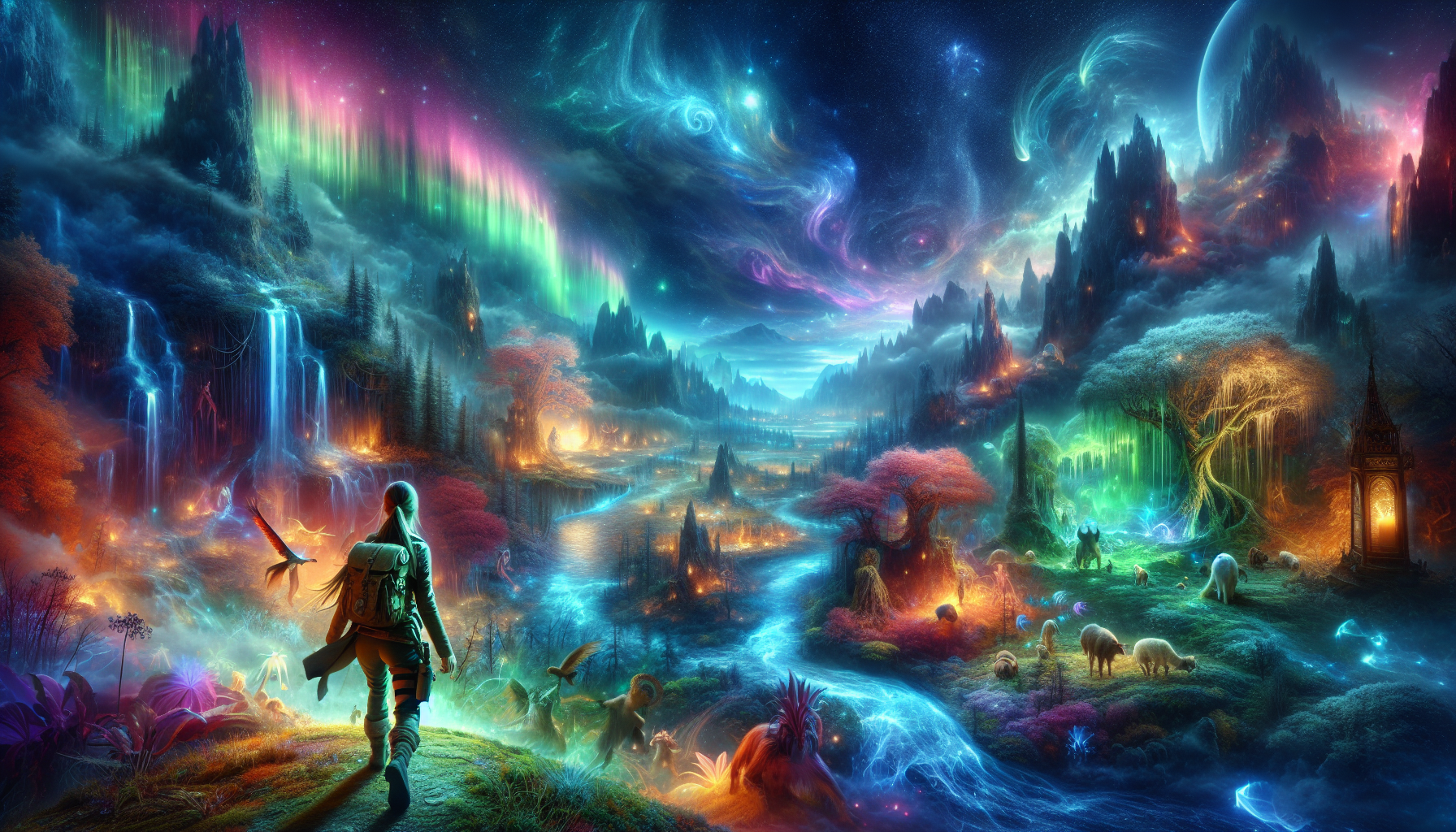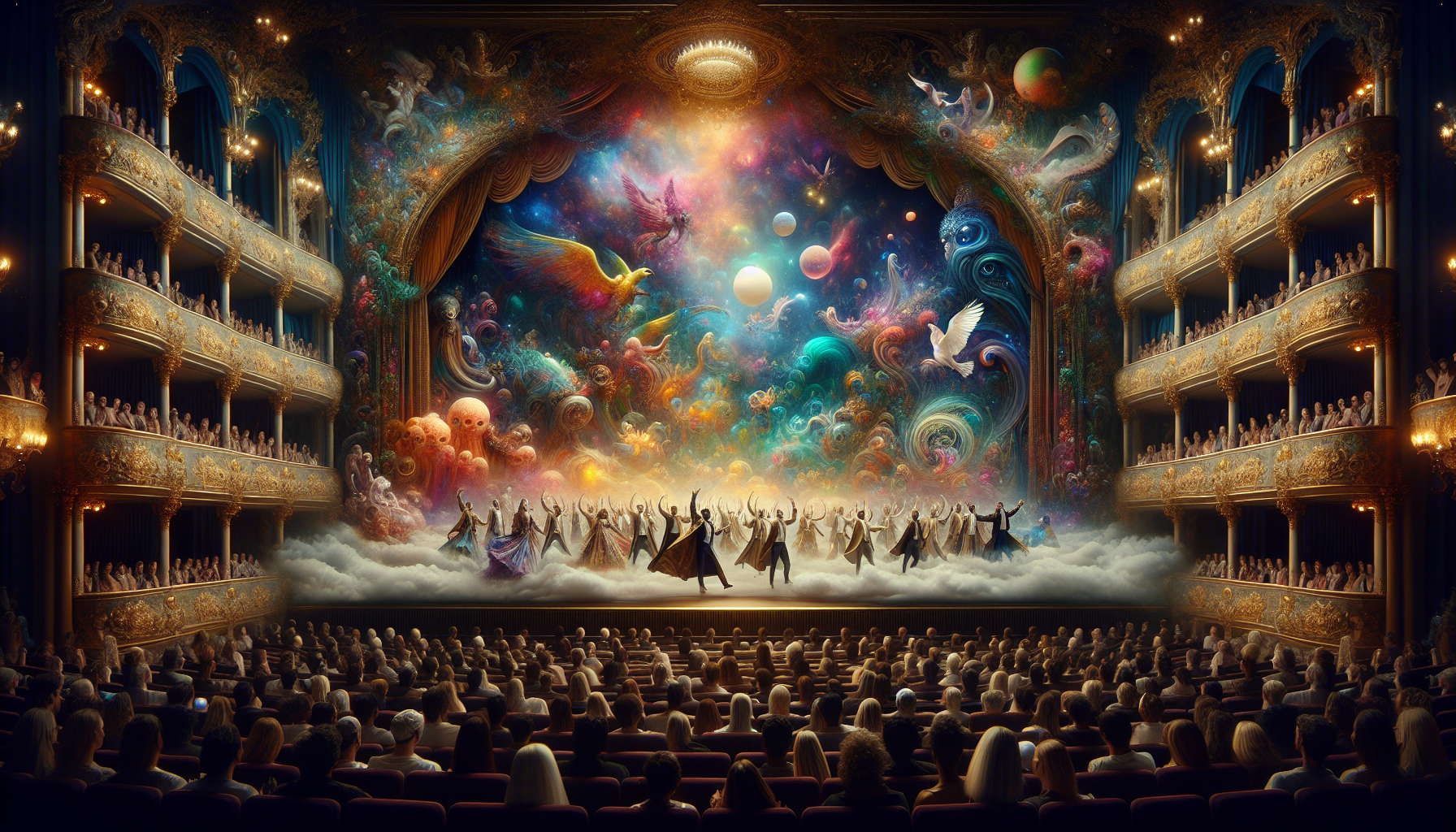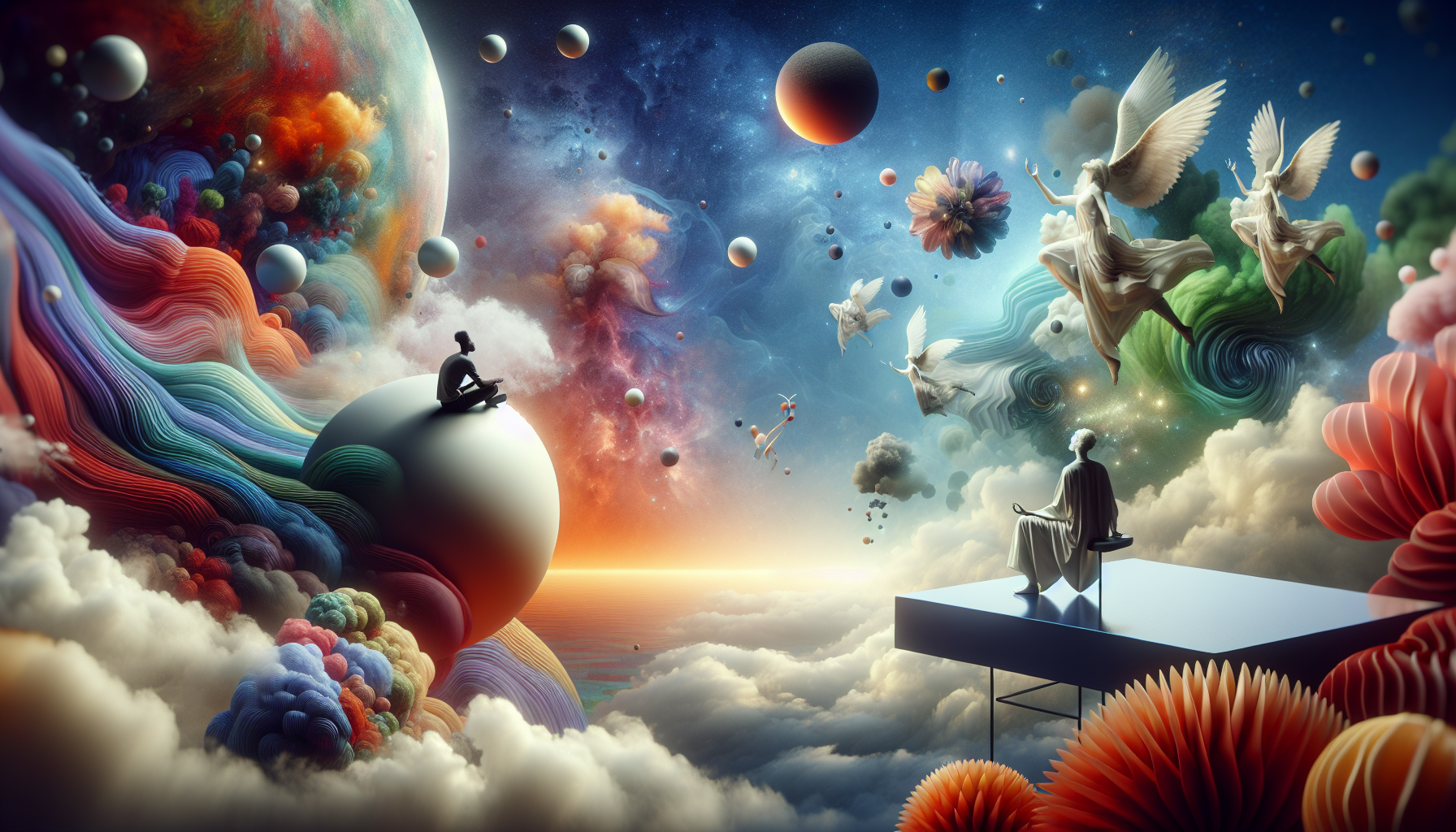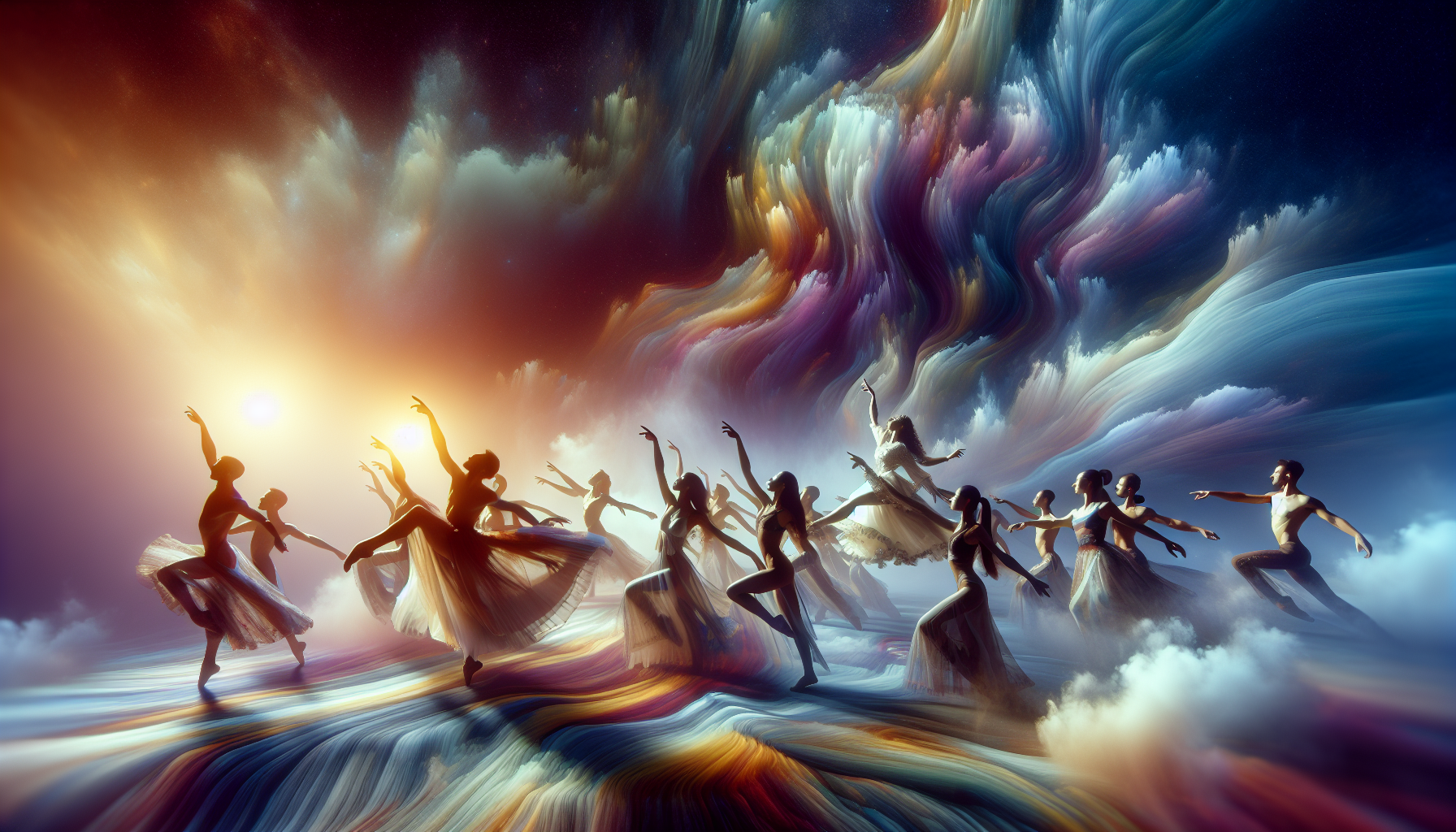In a world where gravity rules with an unyielding hand, the dream of soaring through the skies unfettered by earthly limitations has captivated the human imagination for centuries. This longing for flight, an innate desire to rise above the mundane, has inspired tales as old as Icarus and as modern as the latest innovations in aviation technology. Welcome to “Unleash Your Imagination: The Craziest Flying Dreams Ever Captured on Record!”—a journey through the most fantastical and awe-inspiring dreams of flight that have ever graced the human mind. 🌟
As we navigate this narrative, you’ll find yourself immersed in the vibrant tapestry of dreams where the line between the possible and the impossible blurs. From the whimsical visionaries of the Renaissance, who dared to sketch contraptions meant to rival the birds, to the ingenious inventors of the 20th century, who turned those sketches into reality, each era has added its own chapter to this airborne saga. We’ll explore how these dreams have not only pushed the boundaries of technology but also shaped our cultural landscape, influencing everything from art and literature to the way we perceive freedom and exploration.
Our journey will take us through the innovative minds that dared to think differently, examining the stories behind Leonardo da Vinci’s ornithopters, the Wright brothers’ pioneering flights, and the modern-day dreamers designing personal flying machines. You’ll discover how these dreams have evolved, reflecting societal changes and technological advancements, and how they continue to inspire us to reach for the sky. So buckle up and let your imagination take flight as we delve into the craziest and most thrilling flying dreams ever recorded. ✈️
The Thrill of Flight: Understanding the Fascination with Flying Dreams
Flying dreams have captivated human imagination for centuries. Whether it’s the exhilarating sensation of soaring through the sky or the symbolic liberation they represent, these dreams offer a unique glimpse into the complexities of the subconscious mind. Psychologists and dream analysts often interpret flying dreams as reflections of personal freedom, ambition, or even a desire to escape everyday limitations. The thrill of flight, within the dreamscape, can also represent a sense of control and empowerment, giving dreamers an exhilarating sense of autonomy.
The significance of flying dreams varies across cultures and historical contexts. In many indigenous traditions, flying dreams are seen as spiritual journeys or connections to the divine. For instance, in some Native American cultures, the ability to fly in dreams was believed to signify a powerful spiritual connection and an elevated state of consciousness. Similarly, in ancient Greek mythology, the story of Icarus highlights the allure and danger of flight, emphasizing themes of ambition and hubris.
In modern times, flying dreams have become a subject of scientific inquiry and artistic inspiration. Researchers in the field of oneirology, the scientific study of dreams, have explored the neurological and psychological mechanisms underlying these dreams. Artistic representations of flight, from Leonardo da Vinci’s sketches of flying machines to contemporary films and literature, continue to explore the limitless possibilities and imaginative potential of flight. The enduring appeal of flying dreams lies in their ability to tap into a universal yearning for freedom, adventure, and transcendence.
The Science Behind Flying Dreams: What Causes Them?
Flying dreams can often be attributed to various psychological and physiological factors. During REM (Rapid Eye Movement) sleep, the brain becomes highly active, leading to vivid and sometimes surreal dreams. This stage of sleep is characterized by increased brain activity, similar to that of wakefulness, which may explain the intense realism of flying dreams. Some researchers suggest that these dreams may be linked to the vestibular system, the sensory system responsible for balance and spatial orientation. The sensation of flying could be a byproduct of the brain’s interpretation of these physical sensations during sleep.
Another theory posits that flying dreams are a manifestation of the brain’s attempt to process emotions and experiences. They may reflect a subconscious desire for freedom, control, or escape from life’s challenges. Individuals experiencing stress or significant life changes may be more prone to having flying dreams as a form of emotional coping. These dreams can provide a temporary escape from reality, offering a sense of liberation and empowerment.
Moreover, flying dreams are not limited to humans. Studies have shown that animals, particularly birds, may also experience dreams of flight. Research conducted on the brain activity of sleeping birds revealed patterns similar to those observed in flying humans. This suggests that the experience of flight in dreams may be a shared phenomenon across species, rooted in the neurological processes that govern movement and balance.
The Craziest Flying Dreams Ever Captured
Flying dreams have been a source of inspiration for countless creative works, from literature and film to visual art and music. Some of the most extraordinary flying dreams ever recorded offer a glimpse into the limitless possibilities of the imagination. These dreams, often characterized by fantastical landscapes and surreal experiences, push the boundaries of what is possible in the dream world.
In literature, authors have long been fascinated by the concept of flight in dreams. Lewis Carroll’s “Alice’s Adventures in Wonderland” and its sequel “Through the Looking-Glass” explore themes of flight and transformation, capturing the whimsical and otherworldly nature of dreamscapes. Similarly, J.M. Barrie’s “Peter Pan” introduces the idea of flying as a symbol of eternal youth and freedom, highlighting the transformative power of imagination.
In the realm of visual arts, surrealist artists like Salvador Dalí and René Magritte have captured the dreamlike essence of flying through their paintings. Dalí’s work often features dreamlike landscapes and floating figures, evoking a sense of wonder and intrigue. Magritte’s paintings, with their enigmatic and thought-provoking imagery, challenge viewers to question the nature of reality and the boundaries of the imagination.
Check Out This Video
For a more visual exploration of flying dreams, watch this fascinating video on YouTube: “The Mystery of Flying Dreams” by Dreamscape Channel.
Comparative Analysis of Flying Dreams Across Cultures
Flying dreams are a universal phenomenon, yet their interpretations and significance can vary widely across different cultures. To better understand these differences, it is helpful to compare how various societies perceive and analyze flying dreams.
| Cultural Context | Interpretation of Flying Dreams |
|---|---|
| Western | Often viewed as a symbol of freedom, ambition, or escape. Commonly associated with personal empowerment and liberation from constraints. |
| Indigenous Cultures | Seen as spiritual journeys or connections to the divine. Often interpreted as messages from ancestors or guides. |
| Eastern | May represent balance and harmony. In some traditions, flying dreams are linked to meditation and achieving higher states of consciousness. |
In Western cultures, flying dreams are often romanticized and associated with themes of personal freedom and ambition. This interpretation is reflected in popular media, where flying is frequently depicted as an empowering and liberating experience. On the other hand, many indigenous cultures view flying dreams as spiritual experiences, serving as a bridge between the dreamer and the spiritual realm. In these contexts, flying dreams are often considered sacred and imbued with deep meaning.
In Eastern philosophies, flying dreams may be interpreted as symbols of balance and harmony. They are sometimes linked to practices like meditation and mindfulness, representing the attainment of a peaceful and elevated state of mind. These cultural interpretations highlight the diverse ways in which flying dreams are understood and appreciated across the globe.
Explore More
If you’re intrigued by the cultural nuances of flying dreams, delve deeper into this fascinating topic by exploring further literature and research.
The Future of Flying Dreams: Technology and Virtual Reality
As technology continues to evolve, the potential for experiencing flying dreams in new and innovative ways is expanding. Virtual reality (VR) and augmented reality (AR) technologies are offering new possibilities for exploring the dream world, allowing users to experience the sensation of flight in immersive and interactive environments. These technologies have the potential to revolutionize our understanding of dreams and the subconscious mind.
VR and AR experiences can simulate the feeling of flying, providing users with a safe and controlled environment to explore the dream world. These technologies can also be used for therapeutic purposes, helping individuals overcome fears or anxieties related to flying. By allowing users to experience flight in a virtual setting, VR and AR can provide valuable insights into the psychological and emotional aspects of flying dreams.
In addition to VR and AR, advancements in neuroscience and dream research are opening up new avenues for understanding the mechanisms behind flying dreams. Researchers are exploring the use of neuroimaging techniques to study brain activity during dreams, providing insights into the neural processes that underlie the sensation of flight. This research has the potential to enhance our understanding of the brain and its role in shaping the dream experience.
Join the Conversation
Stay informed about the latest developments in dream research and technology by engaging with online communities and forums dedicated to the study of dreams. Share your own experiences and insights, and connect with others who share your fascination with flying dreams.
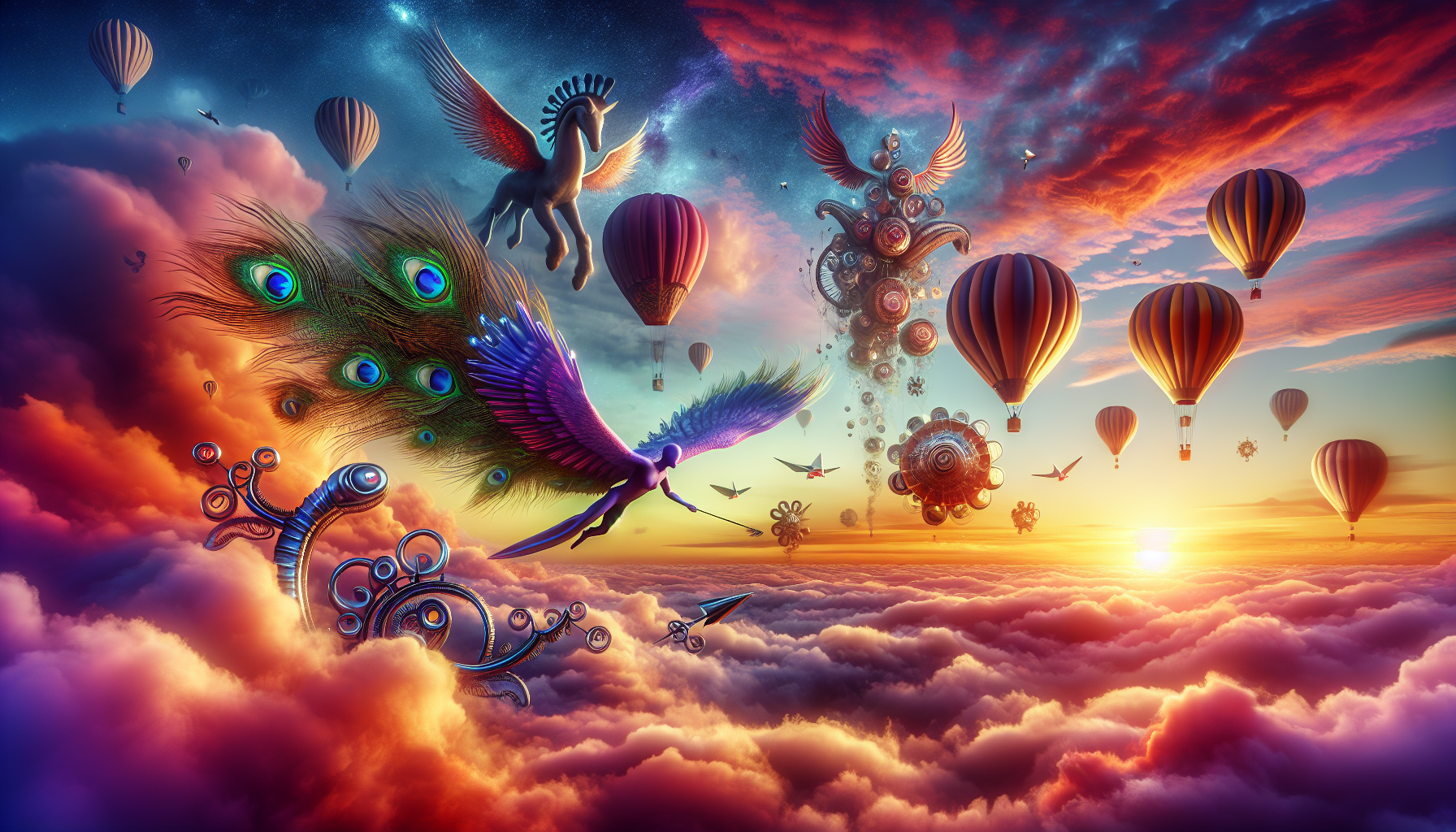
Conclusion
In conclusion, “Unleash Your Imagination: The Craziest Flying Dreams Ever Captured on Record!” takes us on an exhilarating journey through the boundless skies of human creativity and ambition. This article delved into the rich tapestry of dreams and aspirations that have driven humanity to defy gravity and explore the skies in the most imaginative ways. By examining various flying dreams, both historical and contemporary, we have seen how these visions have not only entertained but also inspired technological innovations and cultural shifts.
Throughout our exploration, we first looked at the historical context of flying dreams. From the mythical tales of Icarus and Daedalus to the visionary sketches of Leonardo da Vinci, the dream of flight has been a perennial theme in human storytelling. These early dreams laid the groundwork for the eventual realization of human flight, highlighting the enduring power of imagination in shaping our reality.
We then transitioned to the modern era, where technological advancements have turned some of these dreams into reality. The invention of the airplane by the Wright brothers was a monumental achievement that transformed the world, demonstrating the potential of human ingenuity when fueled by dreams. This section emphasized how dreams, when coupled with determination and innovation, can lead to groundbreaking advancements that redefine what is possible.
The article also highlighted some of the craziest flying dreams that, while not yet realized, continue to inspire us. Concepts such as flying cars, personal jetpacks, and even hoverboards represent the limitless possibilities that await us in the future. These ideas, though seemingly fantastical, encourage us to push the boundaries of what we believe is achievable and continue to dream beyond the constraints of current technology.
Additionally, we explored the cultural impact of flying dreams, examining how they have influenced art, literature, and popular culture. From the iconic scenes of flying in movies like “Peter Pan” and “Harry Potter” to the imaginative depictions in science fiction literature, these dreams have captured our collective imagination and continue to inspire new generations.
The importance of dreaming big cannot be overstated. Flying dreams remind us of the power of imagination to transcend limitations and inspire innovation. They serve as a testament to the human spirit’s relentless pursuit of progress and the belief that anything is possible if we dare to dream it. As we continue to advance technologically, these dreams will undoubtedly evolve, leading to new possibilities and discoveries.
In encouraging readers to engage with this topic, it is crucial to emphasize the role that individual imagination and creativity play in shaping the future. By sharing our own dreams and aspirations, we contribute to a collective vision that propels humanity forward. Therefore, we invite you to reflect on your craziest flying dreams and consider how they might inspire change or innovation in your life or community.
Engage with us by sharing your thoughts in the comments section below. What flying dreams have inspired you? How do you think these dreams can impact our future? We also encourage you to share this article with friends and family to spread the inspiration and continue the conversation about the power of imagination.
In conclusion, while our feet may remain grounded, our minds are free to soar. Let these flying dreams inspire you to unleash your imagination and pursue your wildest aspirations. The sky is not the limit; it is just the beginning of where our dreams can take us. 🌟
Thank you for joining us on this journey through the skies of imagination. We look forward to hearing your thoughts and flying together towards a future filled with endless possibilities. 🚀
*References:*
– Smithsonian National Air and Space Museum
–
Toni Santos is a visual storyteller and dream archivist whose work explores the delicate boundary between memory and imagination. Through layered visuals and symbolic design, Toni captures the fleeting essence of dreams — those strange, beautiful, and sometimes haunting fragments that drift through sleep and linger in waking thought.
His creative journey is rooted in a deep fascination with the subconscious and the imagery it conjures. From half-remembered landscapes to recurring symbols and surreal encounters, each piece Toni brings to life becomes a portal into the inner archive — where time distorts, meanings shift, and personal mythology takes form.
With a background in handcrafted artistry and visual composition, Toni merges intuition with intention. His work doesn’t just depict dreams; it preserves them, translating ephemeral moments into tangible expressions that evoke emotion, curiosity, and quiet revelation. Each visual is both a record and an invitation to explore the rich terrain of inner life.
As the guiding voice behind Vizovex, Toni offers illustrated dream journals, symbolic studies, and visual essays that help others connect with the poetic structure of their own subconscious landscapes. His art becomes a mirror — not just of what we see at night, but of what we carry deep within.
His work is a tribute to:
The fragile beauty of forgotten dreams
The language of symbols in the subconscious mind
The inner worlds we visit but rarely name
Whether you’re a lucid dreamer, a seeker of hidden meanings, or someone fascinated by the mystery of sleep-born stories, Toni welcomes you to step into a space where dreams are not lost — they are archived, one vision, one sketch, one silent narrative at a time.


